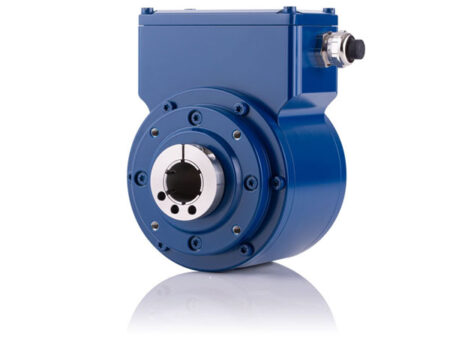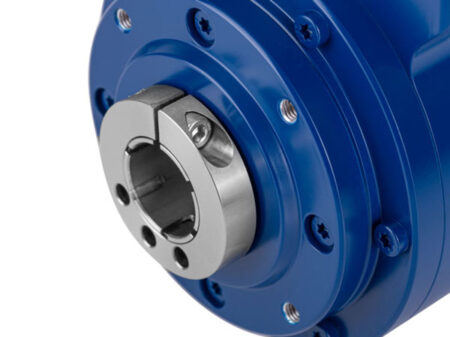Our FGH(J) 40 incremental encoders for hollow shafts are our robust and versatile heavy-duty specialists for a wide range of different applications. They record the speed on standard, main and auxiliary drives in steelworks, rolling mills, mining facilities and port and crane systems. These encoders are now also available for direct mounting on shafts with diameters of ⅜“, ½“, ⅝“, ¾“, ⅞“ and 1”. They are therefore now even more suitable for use in the USA, Great Britain and other countries that prefer to measure in inches.
The robust replacement solution for heavy-duty use
These extremely resilient encoders feature a hard-wearing mechanism, long-living ball bearings and high-quality electronics. They can be installed on the shaft quickly and easily using a clamp ring. What’s more, accurately fitting torque brackets can be used individually when mounting the encoders. The high-performance link heads and torque bracket rods boast maintenance-free and corrosion-resistant designs. In addition, the isolating hybrid ball bearings reliably protect the power train against harmful shaft currents and thus against premature wear.
High signal quality for dynamic control
The encoders FGH(J) 40 still perform impressively with inch measurements, achieving a high signal quality at pulse rates of between 500 and 1 million ppr. This enables them to secure dynamic control in the entire speed range with the signal amplitudes HTL, TTL or Sinus-Cosinus. The encoders also excel thanks to their maximum speed of 4,000 rpm and maximum transmission frequency of 200 kHz. They can be used at temperatures between -40 and +85/100 °C.
Optimum output signals and flexible options
Extreme conditions require a high degree of operational readiness and a large amount of flexibility. To provide the best possible output signals in technical terms, the high-quality torque brackets reliably compensate for inaccuracies such as radial runout of the drive shaft or those caused by the fitting tolerance and axial travel of the drive shaft. If required, further options can also be used to adapt the encoders to meet specific demands, for example a second signal output, additional electronic overspeed switches with programmed position switches and integrated FOC transmitters for interference-free signal transmission via fiber optic cable.
More information on our FGH(J) 40 product page.


